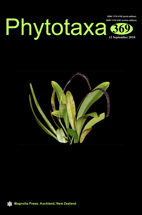Abstract
The genus Sphagnum is known for its morphological variable species, showing plastic responses along environmental gradients (Stenøien et al. 1997). Consequently, species delimitation based on morphological characters is not always straight forward. However, molecular analysis have in some cases pointed to differentiated entities within morphologically recognised taxa, e.g. Sphagnum fuscum (Schimper 1871:63) Klinggräff (1872:4) and Sphagnum magellanicum Bridel (1798:24) (Kyrkjeeide et al. 2015, Yousefi et al. 2017). In other cases, molecular markers have not resolved closely related taxa. A study based on isoenzymes could, for instance, not differentiate Sphagnum viride Flatberg (1988:9) from Sphagnum cuspidatum Ehrh. ex Hoffmann (1796:22) (Hanssen et al. 2000). Moreover, a study based on isoenzymes and RAPD could not differentiate Sphagnum isoviitae Flatberg (1992:2) and Sphagnum brevifolium (Lindb. ex Braithwaite (1878:84)) Röll (1889:340) from Sphagnum fallax (Klinggräff 1872:7) Klinggräff (1880: 128) (Såstad et al. 1999). Hence, the treatment of these taxa at the species level may be questioned. The material used in the studies was limited, and the use of more modern molecular markers might lead to other conclusions. Recognition of the taxa at variety level seems to be a reasonable solution, given our current knowledge. We therefore propose that S. viride, S. isoviitae and S. brevifolium be treated at the variety level while we await more comprehensive genetic studies, which may provide conclusive evidence concerning the status of these taxa.

